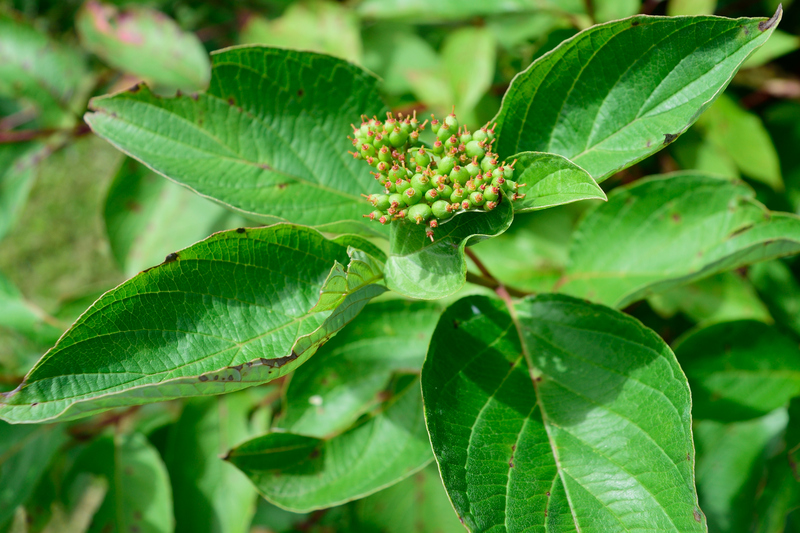The Ultimate Strategy for a Forgotten Garden Revival
Posted on 26/09/2025
The Ultimate Strategy for a Forgotten Garden Revival
Is your once-thriving garden now hidden beneath tangled weeds and fallen leaves? Have you inherited a plot that has seen better days or perhaps let your own green oasis slip into neglect? Reviving a forgotten garden is more than restoration--it's a creative journey that turns overgrown chaos into a personal sanctuary. In this comprehensive guide, we'll take you through effective strategies for forgotten garden revival so you can transform your plot into a lush, vibrant space teeming with life again.
Why Forgotten Gardens Are Worth Reviving
The allure of a forgotten garden lies in its untapped potential. Beneath layers of neglect, these gardens often conceal mature trees, heirloom plants, or quaint features that simply need attention to shine again. Moreover, breathing new life into an abandoned garden is an eco-friendly choice, enhancing biodiversity and boosting property value. Most importantly, a revived garden provides a unique sense of accomplishment and a superlative outdoor retreat.
Benefits of Garden Restoration
- Environmental impact: Supports pollinators, wildlife, and improves air quality.
- Mental wellness: Gardening reduces stress, elevates mood, and offers a space for relaxation.
- Financial value: Well-maintained gardens increase property curb appeal and resale value.
- Historical charm: Old gardens may house rare plants or unique landscaping features worth preserving.

First Steps: Assessing Your Forgotten Garden
Before you grab your tools, take time to thoroughly assess what you're working with. This crucial stage informs your revival plan and helps prevent costly mistakes.
What to Look For:
- Existing plants - Identify mature trees, shrubs, or perennials that can be rejuvenated rather than removed.
- Structural elements - Examine fences, edging, patios, or pathways for integrity and potential reuse.
- Wildlife presence - Notice signs of birds, insects, or small mammals that contribute to the ecosystem and may influence your design.
- Weed and invasive species - Assess the scale of undesirable growth that needs removal.
- Soil and site conditions - Test soil fertility, pH, and drainage to guide future planting.
Clear the Way: Pruning and Cleaning
Your initial efforts should focus on clearing away dead debris and aggressive weeds. However, don't be hasty; remove overgrowth carefully to avoid damaging hidden gems or beneficial plants. Start from the boundaries and work your way in, so you don't miss any neglected corners.
Planning the Ultimate Garden Revival Strategy
A well-structured plan is essential for any garden restoration project. Consider your goals: Will you revive the original design, blend old and new, or create an entirely fresh look?
Key Considerations for a Forgotten Garden Makeover
- Garden style: Do you prefer a cottage vibe, a wildlife sanctuary, or a modern minimalist space?
- Sunlight patterns: Observe sunlight throughout the day to place plants optimally.
- Water access: Plan irrigation or rainwater harvesting for easy maintenance.
- Pathways and seating: Consider how you'll move and relax in the space.
- Budget: Allocate funds for plants, materials, and possible hired help.
Pro tip: Sketch out your ideas on paper or use free online garden planning tools. This visual guide will make your forgotten garden revival easier and more cohesive.
Soil Rehabilitation: The Foundation of Garden Rejuvenation
Reviving a neglected garden often starts beneath the surface. Healthy soil is the bedrock of successful plant growth.
Steps for Restoring Soil Health
- Remove debris such as stones, old roots, and trash to loosen compacted earth.
- Test the soil for pH and nutrients using an inexpensive kit.
- Amend as needed with compost, aged manure, and organic matter to enhance structure and fertility.
- Mulch heavily after planting to retain moisture, suppress weeds, and further enrich the soil.
Saving and Reviving Mature Plants
Many forgotten gardens contain hidden treasures. Rather than uprooting everything, assess each plant for potential rescue.
Tips to Rejuvenate Existing Plants
- Hard prune overgrown shrubs or trees in late winter or early spring to encourage new, healthy growth.
- Divide perennials that are overcrowded, propagating them to fill gaps elsewhere.
- Fertilize carefully as neglected plants may need extra nutrients, but avoid overfeeding.
- Address pests and diseases with natural treatments or, if needed, safe chemical controls.
Removing Weeds and Invasives: The Ongoing Battle
Weeds, brambles, and invasives thrive in abandoned gardens, choking out desired plants. A successful forgotten garden revival demands a strategic and persistent approach to weed management.
Effective, Eco-friendly Weed Control Methods
- Manual removal - Dig out perennial weeds by the root to prevent regrowth.
- Mulching - Apply organic mulch (like bark chips or compost) to smother weeds and enrich soil.
- Solarization - Cover bare patches with clear plastic for a few weeks during hot weather to kill weed seeds.
- Crowd them out - Plant dense ground covers or lawn alternatives to leaving less room for weeds.
The Art of Selective Planting
Now comes the creative phase. Choose plants wisely, considering both aesthetics and practicality. Aim for a blend of easy-care perennials, native species, and seasonal interest for a garden that's both beautiful and resilient.
Best Choices for a Revived Garden
- Native plants: Adapted to your climate and require minimal maintenance.
- Pollinator-friendly flowers: Attract bees, butterflies, and birds for ecological vibrancy.
- Evergreens: Offer year-round structure and color.
- Edible options: Herbs, fruits, or vegetables add productivity and charm.
Structural Elements: Hardscaping for Transformation
Forgotten gardens often hide decayed or partially buried hardscape features. Rather than discarding, consider restoration or creative adaptation:
- Stone paths: Relaying or repointing adds instant character.
- Old fencing or trellises: Clean and repaint/reseal for rustic support of climbing plants.
- Garden ornaments: Uncover and reposition statues, birdbaths, or benches for focal points.
- Ponds and water features: Clean and repair to invigorate the garden with soothing sounds and help wildlife.
A revived garden balances new plantings with restored structure, offering memorable spaces for relaxation or entertaining.
Maintaining Your Revived Garden for Lasting Beauty
Revival is just the beginning. Regular, smart maintenance is key to long-term success in restored gardens.
Essential Maintenance Tips
- Plan a seasonal schedule for pruning, feeding, and weeding.
- Keep up with mulching to maintain soil health and suppress invaders.
- Water deeply but less frequently for stronger root systems.
- Monitor for pests and disease, acting quickly to manage outbreaks.
- Keep paths, structures, and furniture clean and in good repair.
Develop simple routines and proactive habits to avoid slipping back into neglect.
Embracing the Garden's History and Unique Identity
A revived forgotten garden tells a story: one of resilience, creative renewal, and personal passion. Respect the plot's heritage by retaining interesting old features or rare plants. Add upcycled elements, repurpose materials found on site, and let the garden's unique quirks shine.
Consider keeping a journal or photo log of the transformation--your efforts may inspire friends, neighbors, or future owners to continue the legacy.
Eco-Friendly and Sustainable Practices
Every forgotten garden revival project is an opportunity to make sustainable choices. Emphasize organic, wildlife-friendly practices:
- Compost green waste on site to create your own soil amendment.
- Collect rainwater in barrels for irrigation.
- Limit chemical pesticides and fertilizers to protect pollinators and soil organisms.
- Build habitats like log piles, birdhouses, and bee hotels.
A revived garden can become a haven for biodiversity, offering both beauty and a positive environmental impact.

Frequently Asked Questions About Forgotten Garden Revival
How long does a full garden restoration take?
The timeline for reviving an abandoned garden depends on its size, level of neglect, and your available time. A basic cleanup and planting may take one season, while full restoration of large or historic gardens can span several years. Patience and perseverance are essential!
Do I need professional help to restore a neglected garden?
While many steps are DIY-friendly, consider hiring professionals for structural repairs, large tree work, or garden design consultations if your project feels overwhelming.
How can I ensure the new plants survive?
Prepare soil thoroughly, choose regionally appropriate species, water well during establishment, and mulch generously. Regular observation and prompt care will help new plantings thrive.
Is it possible to revive a garden on a budget?
Absolutely! Propagation of existing plants, use of compost, upcycling materials, and swapping cuttings with neighbors are cost-effective ways to revive your garden without breaking the bank.
Conclusion: Your Roadmap to Forgotten Garden Renewal
Transforming a neglected landscape is one of the most rewarding garden challenges. By following the ultimate strategy for forgotten garden revival detailed here, you'll breathe new life into your outdoor space--honoring its past while cultivating a thriving, beautiful future. Start with a thoughtful assessment, tackle the basics of cleanup and soil restoration, save what you can, and don't be afraid to add your own creative vision.
Whether you wish to relax amid fragrant blooms, grow your own vegetables, or watch wildlife return, your revived garden will become a source of joy for years to come. Begin your journey today and unveil the hidden potential just beyond your doorstep!

